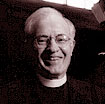Everyone does a Vigil of Christmas (“Christmas Eve”), and many have Vigils of Easter services. But who has a Vigil of Pentecost service?
Yet, we have profound texts appointed for the Vigil of Pentecost and an opportunity to pray for the gifts and fruits of the Spirit for the sake of God’s mission in the world. Lutheran worship books (LBW and ELW), as well as other denominational worship books, have suggested recovery of the Vigil of Pentecost and have provided propers for such a celebration.1
Looking back to the first Pentecost, we find the disciples and other followers are in one place in prayer. They have Jesus’ promise as they wait: “I am sending upon you what my Father promised…(that you will be) clothed with power from on high” (Luke 24:49). As usual, the Spirit surprises us and gives gifts and fruits that serve our Spirit-driven mission. To serve our common life and mission we are given a diversity of gifts (Romans 12:3-8; I Corinthians 2:12-14; 12:1-13; Ephesians 4:11-13). That indwelling Spirit brings forth fruit that serves the common good of the world (Mark 4:20; Galatians 5:22-25; John 15:1-17). This service emphasizes that we are a “Spirit-driven church.” I believe “The Spirit-driven Life” is a better and more accurate phrase for Pentecost than the popularized “purpose driven life.” Scripture points us to the gifts of the Spirit which are given for ministry. In our own lives, St. Paul points to the fruits of the indwelling Spirit.
An ideal liturgy for a Vigil of Pentecost would be Evening Prayer. Emphasis would be on periods of silence as worshipers “listen to what the Spirit is saying to the churches” (Revelation 2:7, 11, 17, 29; 3:6, 13, 22). It would also prayerfully prepare for the festival liturgy of Pentecost Sunday. Pastors would have an opportunity to proclaim what the Spirit (“God in the present tense”) means for the mission to which God has called us and the mission which comes from God in Jesus and now is entrusted to us; Jesus says, “As the Father has sent me, so I send you” (John 20:21; 17:18).
Besides emphasizing the vocation and calling of all the baptized, leaders may want to encourage all who are involved in specific ministries in the congregation to be present as they seek to be “stirred up” by the Holy Spirit.
A metaphor for this is the Coventry Cathedral story. The Anglican Cathedral was bombed out during World War II, and after the war, they were planning to build a new modern cathedral. But leaders decided that they would need a “consecrated people” to use a “consecrated building.” Therefore, they spent months in Bible study and prayer as they sought to be a consecrated people with a Spirit-driven mission. The Vigil of Pentecost could focus on this “consecration” by the “missionary” Spirit. One could emphasize that all people in service areas of the church, e.g., church council, Sunday School teachers, social service groups, ministry teams, acolytes, choir, etc. should gather at the vigil for prayer as they ponder and prepare for their various ministries in the upcoming year.
Silence for reflection in Evening Prayer at the Vigil of Pentecost should be ample that people may be open to and pray for the gifts and fruits of the Spirit. Planners for this service could provide suggestions for silent reflection and prayer that reflects the ministry and needs of their particular congregation.
Scripture and hymns will proclaim the promise of power from on high. The appointed lectionary text in Romans 8:14-17, 22-27 speaks to a vigil focused on praying for the congregation’s mission. “Likewise the Spirit helps us in our weakness; for we do not know how to pray as we ought, but that very Spirit intercedes with sighs too deep for words” (verse 26). In the Gospel of John, Jesus reminds us that the Holy Spirit “will teach you everything and remind you of all that I (Jesus) have said to you” (14:26).An appropriate hymn for the Vigil of Pentecost and the stress on God’s mission for us is “God Is Here” (Evangelical Lutheran Worship #526). Other Pentecost hymns or hymns focusing on prayer and mission would also be suitable.
Candles can highlight the flames of Pentecost. Additional candles could surround the Paschal Candle that is lighted during the 50 days of Easter rejoicing. One might light seven candles from the Paschal Candle signifying the seven churches of Revelation. Or one might recall the seven gifts of the baptismal prayer as the pastor lays hands on the newly baptized and prays that the person will be sustained with the gift of the Holy Spirit. It is helpful to be reminded that in the Affirmation of Baptism (confirmation) rite, the pastor again lays hands on the person and prays “Stir up in (name) the gift of your Holy Spirit” and then lists those seven gifts again. So this night might be an occasion of stirring up in all people the gift of the Holy Spirit so we might live our baptismal vocation in the world with the promised “power from on high.”
After this vigil service, next day’s Pentecost liturgy will be a significant celebration of what they have prayed for and anticipated.
1Gail Ramshaw and Mons Teig, Keeping Time: the Church’s Years (Minneapolis: Augsburg Fortress, 2009), 129, 156. Brief suggestions are offered for a Vigil of Pentecost.

